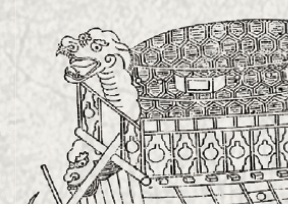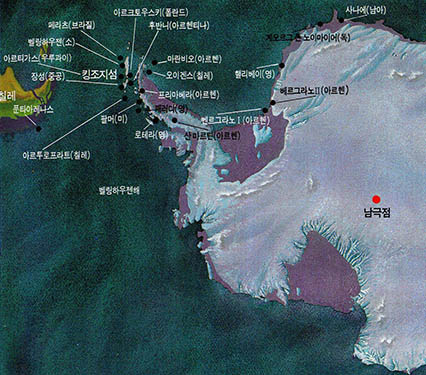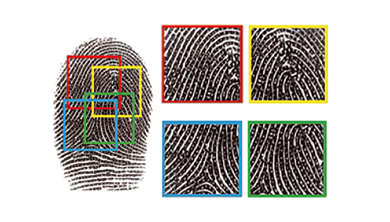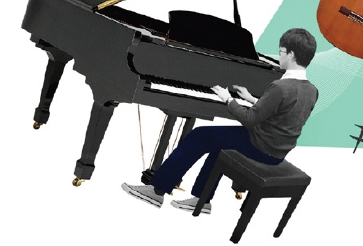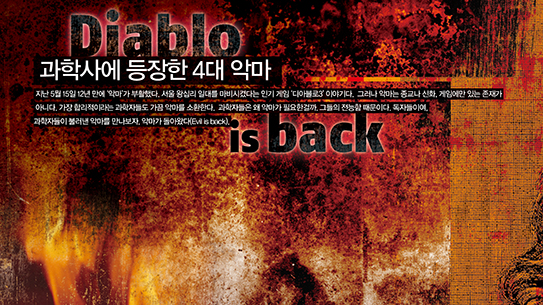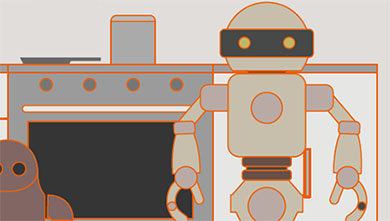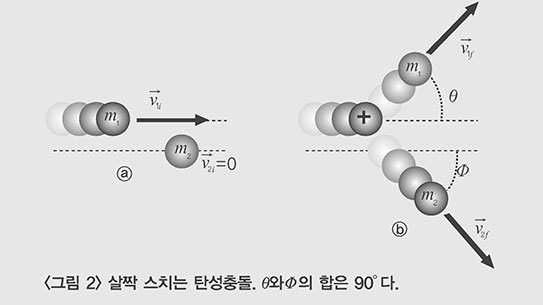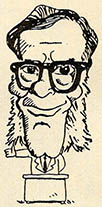
1989년 3월 23일 지구는 또하나의 근접신호를 받았다. 직경 약 반마일 크기의 소행성이 지구와 달사이 거리의 두배 정도인 약 50마일의 사이를 두고 지나가 버렸다. 물론 이 정도의 거리라면 안전한 것으로 들릴 것이다.
그러나 그 행성은 지구의 궤도를 거의 가로지르는 궤도를 달리고 있으며 가끔(꽤 오랜기간에 걸쳐) 지구와 소행성은 동시에 교차점에 이르게 되며 이것은 위에 말한 것과 같은 ‘윙’하는 근접신호를 보내게 된다.
50만마일, 또는 이보다 약간 가까워질 수 있는 거리는 소행성들의 궤도가 안정돼 있다면 가능한 최단거리라고 말할 수도 있으리라. 그러나 사정은 그렇지 않다. 지구는 무거운 물체이고 그 궤도는 매우 안정돼 있지만 소행성은 상대적으로 작은 것이고 지구나 달 화성 그리고 금성의 인력을 받게 된다. 그래서 그들의 궤도는 항상 조금씩 바뀌게 된다.
소행성의 궤도는 지구와 멀어질 수도 있고 가까워질 수도 있다. 확실히 지구와 가까워지기보다는 멀어질 여지가 크다. 따라서 지구와 충돌할 코스를 달릴 가능성은 희박하지만 그렇다고 전혀 가능성이 없는 것은 아니다.
문제는 이런 소행성이 하나뿐이 아니라는 데 있다. 지난 1937년 천문학자들이 ‘헤르메스’라고 이름붙인 소행성이 지구에서 20만마일 이내를 통과했다. 이것은 지난 3월에 지나간 행성보다 큰 것이어서 약 직경 1마일 크기의 것이었을 것이다.
1972년 8월 10일에는 직경이 아마도 단지 40피트되는 작은 물체가 남 ‘몬타나’지상 30마일 상공을 통과했다. 그것은 성층권으로 사라져 버렸다.
일부 천문학자들은 직경이 반마일 안팎이고 지구를 지나치는 궤도를 갖고 있는 물체가 적어도 1백여개는 된다고 생각하고 있다. 또한 직경 수십피트 크기의 물체는 수천개가 있을 것이다. 분명히 이들 중 어떤 한개가 언젠가 지구에 부딪칠 가능성은 바로 얼마전 지구를 스쳐간 것과 같이 그냥 스쳐갈 가능성보다 훨씬 큰 것이다.
남부 몬타나지상을 지나간 것과 같은 비교적 작은 물체라도 지구와 충돌하면 엄청난 재난을 가져올 수 있다. 만약 땅에 부딪치면 상당히 큰 웅덩이를 파게 될 것이다. 이런 물체들이 지구에 부딪칠 때의 속도는 초속 20마일이나 된다.
우리 지구를 스쳐간 것과 같은 직경 반마일 크기의 물체라면 TNT 2백억톤의 위력으로 부딪칠 것이다. 뉴욕에 떨어지면 의심할 바 없이 전시가를 폐허화하고 순식간에 수백만의 사람들을 죽이게 될 것이다.
대양에 떨어지면 사태는 더욱 나빠질 것이다. 왜냐하면 대양의 물이 엄청나게 출렁이어서 수백피트 높이의 산과 같은 파도가 가까운 해안을 엄습해 수천만의 사람들을 익사시킬 것이기 때문이다.
만약에 보다 큰 물체가 떨어지면 지각을 뚫어 화산활동을 시작케 할 것이며 이는 지구전체에 산불을 내고 성층권에 많은 먼지를 날려 보내 오랜동안 햇볕을 차단하게 될 것이다. 이런 거대한 충돌은 거의 또는 모든 생물을 죽일 수 있다. 실제 이런 충돌로 6천5백만년전에 지상의 공룡이 전멸되었다고 생각하는 사람들이 많이 있다.
최근에는 보다 작은 규모의 충돌이 있었다. 아리조나주에는 직경 5분의 4마일, 깊이 6백피트 크기의 큰 웅덩이가 있는데 이것은 이런 충돌로 아마 5만여년전에 생긴 것 같다.
이때의 충돌은 한사람도 죽이지 않았을 것인데 그 이유는 당시에는 아직 미대륙에 사람들이 살지 않았기 때문이다. 1908년에는 중앙 시베리아에서 훨씬 작은 충돌이 있었는데 이 충돌로 근처 20마일 지점까지의 모든 나무들이 쓰러졌다. 그러나 그곳은 황야로 사람이 살지 않았기 때문에 아무도 죽지는 않았다.
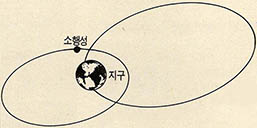
실제 역사가 기록된 이후 천체의 충돌로 사람이 죽었다는 기록은 없다. 그러나 이런 행운이 언제나 계속되리라고 바랄 수는 없다.
그럼 우리는 어떻게 해야 하나? 30년전 나는 논문을 하나 썼는데 이것은 제목이 ‘우주에서의 큰 사냥’이라는 것으로 1959년 8월호 ‘우주시대’라는 잡지에 게재되었다.
이 글에서 나는 지구에 다가올지 모를 몇피트 이상 크기의 물체를 감시할 우주초소의 설립을(설립할 능력이 있을 때) 제창했다. 지구에 접근하는 물체는 궤도에 장치한 수소폭탄이나 또는 이보다 개선된 다른 무기로 폭발시킬 수 있을 것이다.(이런 것은 적의 미사일에 대응하는 것이 아닌 소행성에 대항하는 ‘스타워즈’가 될 것이다)
내가 아는한 이런 주장을 한 사람은 내가 최초이다. 그러나 그 이후 천문학자들은 문제를 진지하게 검토해 왔으며 결국 도시를 폐허화시킬 충돌은 평균 5만년만에 한번 있으리라는 추측이 나왔다.
그렇다면 아리조나 웅덩이 사건 이후 긴 시간이 지난 것이 된다. 말하자면 기간이 다 된 셈이다.
물론 작은 행성을 파괴시키면 부수러기들이 아마 원래의 궤도를 돌 것이지만 만약에 지구에 부딪치더라도 조각 하나 하나는 큰 피해를 주지 못할 것이다. 큰 웅덩이가 패이는 것 대신에 우리는 작은 파편들이 대기 중에서 타버려 빛나는 유성이 되는 것을 보게 될 것이다.
On March 23, 1989, Earth had another close call. A small asteroid, about half a mile across, whizzed past at a distance of about 500,000 miles, about twice the distance from the Earth to the moon. That sounds like a safe distance, of course.
However, that rock is following an orbit that nearly crosses Earth's and every once in a while (a fairly long while), both Earth and asteroid reach the crossing point at the same time and it gives us one of these close-call whizz-bys.
We might argue that 500,000 miles, or possibly a little closer, may be as close as it can possibly come if the orbits stay as they are, but they won't.
Earth is a massive body and its orbit is quite stable, but the asteroid is a tiny thing in comparison and it is subject to the pull of Earth and moon and Mars and Venus as it moves so that its orbit is constantly shifting a little.
Its orbit may shift so as to carry it farther from Earth, or possibly closer. To be sure, there is much more room away from Earth than closer, so the chance of its moving into a collision course is very small, but it's not zero.
The trouble is that this asteroid is not the only one, either. Back in 1937, an asteroid that astronomers named Hermes passed within 200,000 miles of Earth, and it was larger than this one that just missed us. It may have been a mile across.
And on Aug. 10, 1972, a small object, only 40 feet across, perhaps, actually passed Earth at a distance of only 30 miles above the surface of southern Montana and whizzed on. It had passed through our stratosphere.
Some astronomers think there may be at least a hundred objects that are half a mile or more across and that have orbits that send them skimming by Earth. And there may be thousands that are a few dozen feet across. Obviously the chance that some one out of all these will finally strike Earth is far greater than the chance that some particular one, like the one that just missed us, will do so.
Even a comparatively small object like the one that missed southern Montana could do fearful damage if it struck. If it hit land, it would gouge a sizable crater. After all, these projectiles can be moving 20 miles a second as they hit Earth.
An object half a mile across, like the one that just missed us, would hit with the force of 20 billion tons of TNT. If it struck New York, it would undoubtedly wipe out the entire city and kill millions of people in an instant. If it struck the ocean it might be even worse, for the water in the ocean would slosh tremendously and huge “tidal waves,” mountains of water hundreds of feet high, would crash onto neighboring shores and drown tens of millions.
If the object is bigger still, it might puncture Earth's crust, set of volcanic action, start worldwide forest fires, and cast so much dust up into the stratosphere as to cut off sunlight for a long period. Such a hugh strike might kill most or all of life and, indeed, such a huge strike is thought by many to have wiped out the dinosaurs 65million years ago.
Lesser collisions have happened recently. In Arizona, there is a crater four-fifths of a mile across and 600 feet deep that formed perhaps 50,000 years ago as a result of a collision. It probably didn't kill anyone because human beings had not reached the Americas yet. In 1908, a much smaller strike in central Siberia knocked down every tree for 20 miles around, but it was a desolate, uninhabited region and nobody was killed.
In fact, there is no record in historic times of any human being being killed by a meteoric strike ─ but we can't stay that lucky forever.
What can we do about it?
Thirty years ago I wrote an essay that appeared in the Aug, 1959, issue of Space Age called “Big Game Hunting in Space.” In it, I advocated the establishment (once we had the ability to do so) of a space sentinel that would watch for any nearby object more than a few feet wide that might be approaching. It might then be blown up by a hydrogen bomb planted in its path, or by something more advanced. (It would be a “Star Wars” defense aimed at asteroids rather than at enemy missiles.)
As far as I know, I was the firse to suggest this, but since then, astronomers have discussed the problem very seriously. After all, there are estimates that a “citybusting” strike might happen, on the average, once in 50,000 years, and it's been that long since the Arizona crater. We might be due, so to speak.
Of course, if we smash up a small asteroid, the rubble will continue in its orbit, perhaps, but then if that does strike the Earth, each individual bit can't do much damage. Instead of having a huge crater gouged out, we'll be treated to a brilliant meteor display as the small pieces burn up in the air.
(c) 1989, Los Angeles Times Syndicate





